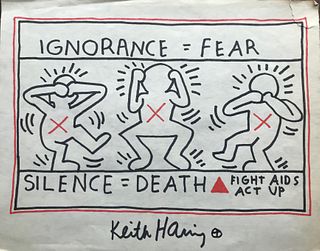Rare Egyptian 19th Dynasty Wooden Painted Ushabti
Lot 60b
About Seller
Artemis Fine Arts
686 S Taylor Ave, Ste 106
Louisville, CO 80027
United States
Selling antiquities, ancient and ethnographic art online since 1993, Artemis Gallery specializes in Classical Antiquities (Egyptian, Greek, Roman, Near Eastern), Asian, Pre-Columbian, African / Tribal / Oceanographic art. Our extensive inventory includes pottery, stone, metal, wood, glass and textil...Read more
Categories
Estimate:
$1,500 - $2,000
Absentee vs Live bid
Two ways to bid:
- Leave a max absentee bid and the platform will bid on your behalf up to your maximum bid during the live auction.
- Bid live during the auction and your bids will be submitted real-time to the auctioneer.
Bid Increments
| Price | Bid Increment |
|---|---|
| $0 | $25 |
| $300 | $50 |
| $1,000 | $100 |
| $2,000 | $250 |
| $5,000 | $500 |
| $10,000 | $1,000 |
| $20,000 | $2,500 |
| $50,000 | $5,000 |
| $100,000 | $10,000 |
| $200,000 | $20,000 |
About Auction
By Artemis Fine Arts
May 10, 2018
Set Reminder
2018-05-10 10:00:00
2018-05-10 10:00:00
America/New_York
Bidsquare
Bidsquare : Fine Ethnographic / Asian / Ancient Art
https://www.bidsquare.com/auctions/artemis-gallery/fine-ethnographic-asian-ancient-art-3213
Featuring antiquities from around the world including Pre-Columbian, Tribal, Classical, Asian, so much more! Artemis Fine Arts info@artemisfinearts.com
Featuring antiquities from around the world including Pre-Columbian, Tribal, Classical, Asian, so much more! Artemis Fine Arts info@artemisfinearts.com
- Lot Description
Ancient Egypt, New Kingdom period, 19th Dynasty, ca. 1320 to 1200 BCE. A well-preserved, tall, and hand-carved wooden ushabti with a wonderful form displaying a myriad of fine details. The figure stands in mummiform with slender legs, with elbows projecting from its sides. Painted details include a pair of hands holding the symbolic pick and hoe, a large pectoral collar which hangs between each shoulder, and a singular column of faint hieroglyphic symbols tracing down the lower body, all atop a layer of faded bitumen. The stylized head dons a tripartite wig which frames a minimalist visage comprised of almond eyes, thin lips, and a broad nose. Wooden ushabti are of far greater rarity than their stone or faience counterparts due to the rapid rate of decomposition over time. A spectacular example! Custom museum-quality display stand included. Size: 2.425" W x 8.25" H (6.2 cm x 21 cm); 8.75" H (22.2 cm) on included custom stand.
Ushabti dolls are figures shaped like adult male or female mummies wearing traditional ancient Egyptian headdresses. The ancient Egyptians believed that after they died, their spirits would have to work in the "Field of Reeds" owned by the god of the underworld, Osiris. As a result, they are frequently depicted with arms crossed, holding picks and hoes, with baskets on their backs. This meant that the task of agricultural labor was required by all members of society, from workers to pharaohs. The wealthier nobility in Egyptian society were able to have ushabti made of faience, though wood was a more economical option for members of lower classes.
Provenance: private Davis collection, Houston, Texas, USA; ex-private New York, New York, USA collection; ex-private Belgian collection
All items legal to buy/sell under U.S. Statute covering cultural patrimony Code 2600, CHAPTER 14, and are guaranteed to be as described or your money back.
A Certificate of Authenticity will accompany all winning bids.
We ship worldwide and handle all shipping in-house for your convenience.
#132838Surface wear commensurate with age, with dozens of stable expansion fissures. Fading to painted details and hieroglyphic text, loss to front portion of feet and nose, otherwise excellent. Light earthen deposits and nice pigmentation remains throughout.Condition
- Shipping Info
-
All shipping is handled in-house for your convenience. Your invoice from Artemis Gallery will include shipping calculation instructions. If in doubt, please inquire BEFORE bidding for estimated shipping costs for individual items.
-
- Buyer's Premium



 EUR
EUR CAD
CAD AUD
AUD GBP
GBP MXN
MXN HKD
HKD CNY
CNY MYR
MYR SEK
SEK SGD
SGD CHF
CHF THB
THB
















